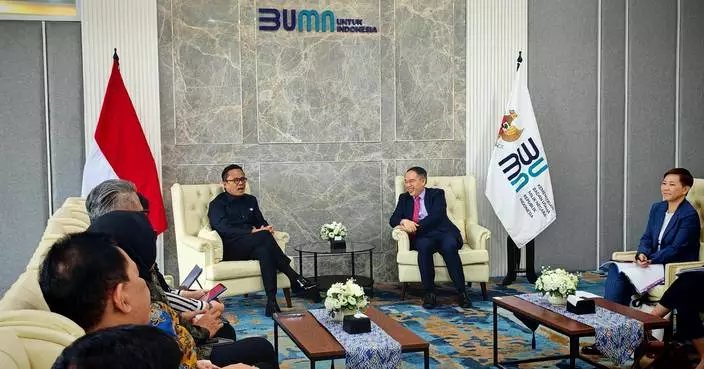Guangdong-Hong Kong-Macao Pearl River Delta Regional Air Quality Monitoring Network results for 2023 released
Guangdong, Hong Kong and Macao jointly released today (December 11) a report on air quality in 2023 under the Guangdong-Hong Kong-Macao Pearl River Delta Regional Air Quality Monitoring Network (the Network) which indicates a long-term and significant downward trend of various air pollutants, namely sulphur dioxide (SO2), nitrogen dioxide (NO2), carbon monoxide (CO), respirable suspended particulates (RSPs, PM10) and fine suspended particulates (FSPs, PM2.5) concentrations.
The report reveals that 2023 annual average concentrations for these parameters have declined between 17 per cent and 86 per cent from their peak levels (shown in Annexes 1 and 2). The decline well demonstrates the effectiveness of emission reduction measures implemented across the three places in improving air quality in the Pearl River Delta region. However, ozone (O3) annual average concentrations have remained stagnant in recent years, indicating the need for alleviation of the regional photochemical pollution. In response, the study on "Characterization of photochemical ozone formation, regional and super-regional transportation in the Greater Bay Area" was carried out accordingly and concluded in early 2024, providing scientific data for further understanding on the causes and regional and super-regional transport characteristics of ozone within the region.
The Hong Kong Special Administrative Region (HKSAR) Government has continued to implement various air pollutant emission control measures covered in the Hong Kong Roadmap on Popularisation of Electric Vehicles (EVs), the Clean Air Plan for Hong Kong 2035 and Hong Kong's Climate Action Plan 2050 on marine and land transport, power plants and non-road mobile machinery to enhance air quality. Since 2019, Hong Kong has collaborated with Greater Bay Area cities to establish a domestic marine emission control area in the Pearl River Delta, requiring all vessels to use compliant fuel within Hong Kong waters while sailing or at berth. Ocean-going vessels are also required to use cleaner fuel while at berth. Furthermore, the HKSAR Government is preparing to amend the Air Pollution Control (Marine Light Diesel) Regulation and tighten the cap on the sulphur content of locally supplied marine light diesel from 0.05 per cent to 0.001 per cent.
For vehicles, the HKSAR Government is committed to phasing out approximately 40 000 Euro IV diesel commercial vehicles progressively by the end of 2027 through a subsidy scheme. The Government deploys roadside remote sensing equipment to control exhaust emissions from vehicles. New registrations of fuel-propelled private cars including hybrids will cease in 2035 or earlier, and approximately 700 electric buses and 3 000 electric taxis will be introduced by end-2027. The HKSAR Government has been actively implementing various measures to promote green transformation of vehicles, and is striving towards zero vehicular emissions by 2050. These efforts have produced early results, with the number of EVs in Hong Kong increasing roughly sevenfold in five years, from about 14 000 in 2019 to over 102 000 in September 2024.
Guangdong Province published and implemented the "Notice on Implementation of Monitoring Requirements on Fugitive Emission of volatile organic compounds (VOCs) from Factories Issued by Department of Ecology and Environment of Guangdong Province", the "Notice on Strengthening Control of VOCs Emissions in Storage and Transportation of Oil Depots and Petrochemical and Chemical Enterprises", the "Notice on Further Reduction of Nitrogen Oxides from Stationary and Mobile Sources issued by Department of Ecology and Environment of Guangdong Province", and the "Notice on Strengthening Environmental Control on Diesel Trucks of Key Vehicle-using Enterprises", as well as promulgating the local standard "Integrated Emission Standard of VOCs for Stationary Pollution Source" (DB44/2367-2022). Guangdong Province launched the hierarchical management of VOCs-related enterprises, enhanced the total VOCs management, advanced the control of industrial boilers and furnaces, upheld a co-ordinated approach across vehicle regulations, fuel standards, roadway management, and enterprise compliance to strengthen emissions regulations for diesel trucks operated by key enterprises, conduct compliance checks on new vehicles, improve emissions management for non-road mobile machinery and carry out regular sampling and inspection of the fuel quality and emissions of engineering machinery.
The Macao Special Administrative Region (Macao SAR) Government has been committed to improving air quality. In 2023, the Government of the Macao SAR announced the Long-Term Decarbonization Strategy of Macao and a related specific plan, the Electric Vehicle Promotion Plan of Macao. By promoting the implementation of these strategies and plans, significant reductions in air pollutants and greenhouse gas emissions are expected. The Macao SAR Government also continues to advance various measures on vehicular tailpipe emissions, the promotion of environmentally friendly vehicles, and the control of VOCs. These measures include reviewing and optimising tailpipe emission standards for both newly imported and in-use vehicles, encouraging vehicle owners to phase out high-polluting old vehicles through the Subsidy Scheme for Phasing out Old Motorcycles with Replacement of New Electric Motorcycles and the Subsidy Scheme for Phasing Out Old Diesel Vehicles, promoting the use of electric vehicles and enhancing related ancillary facilities, implementing import controls on high-VOC automotive repair paints and varnishes, and continuously advancing the study on regulation of other products containing VOCs at a high level.
The Network comprises a total of 23 air monitoring stations in Guangdong, Hong Kong and Macao. The Ecological and Environmental Monitoring Centre of Guangdong, the Environmental Protection Department (EPD) of Hong Kong, the Macao Environmental Protection Bureau and the Macao Meteorological and Geophysical Bureau are responsible for the co-ordination, management and operation of the monitoring stations in the respective places and the release of quarterly and annual monitoring results. The relevant reports are available at the following websites:









